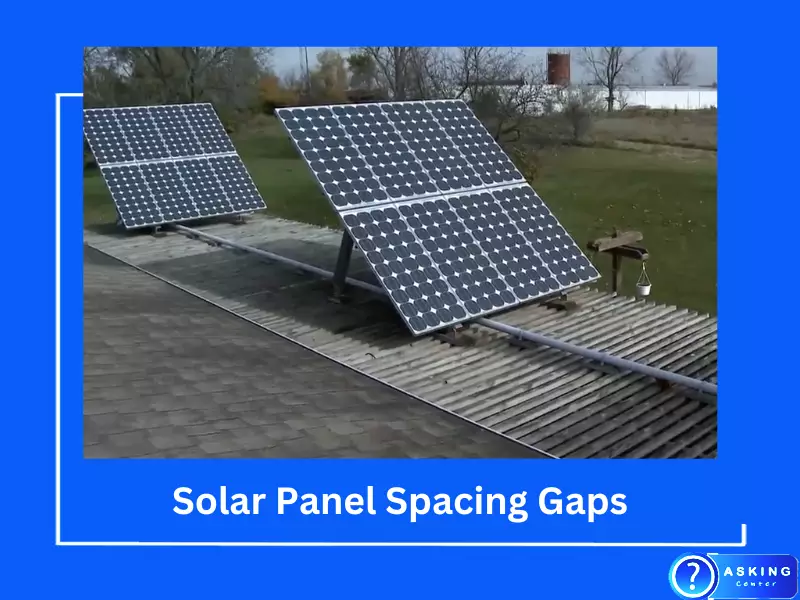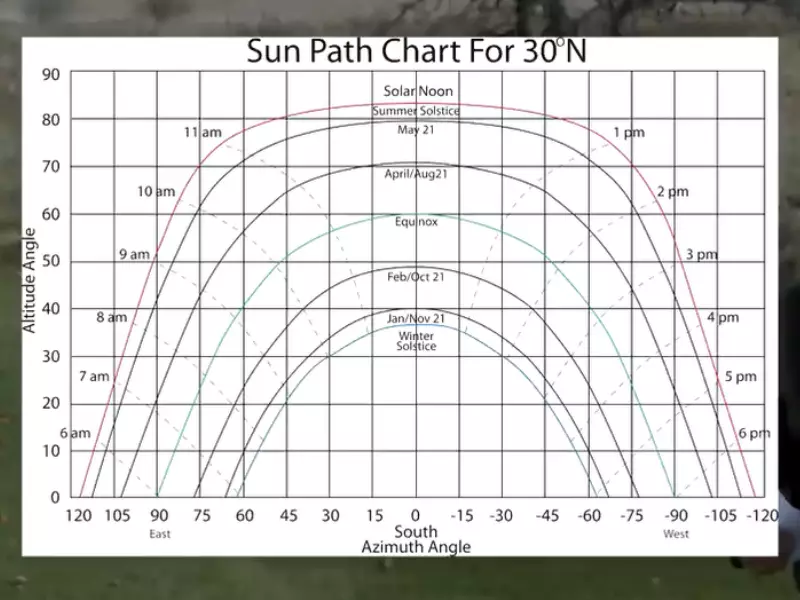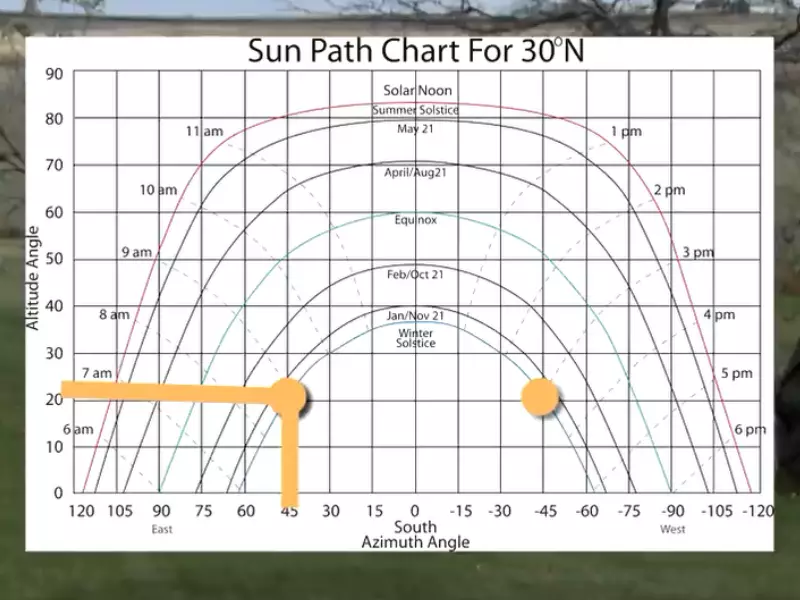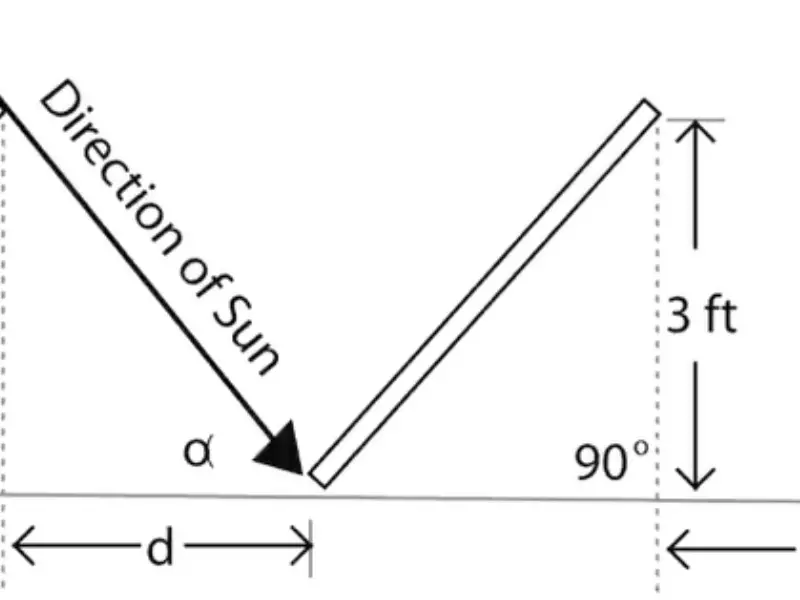Solar panels are a cornerstone of renewable energy, transforming sunlight into electricity, powering homes, businesses, and even entire communities. To optimize their performance, it’s essential to pay close attention to their installation, notably the concept of solar panel spacing gaps. Proper spacing gaps between solar panels play a pivotal role in enhancing their efficiency and longevity.
Solar panel spacing gaps pertain to the distance between each panel and the supporting surface, between individual panels, and between rows of panels. These gaps are integral in ensuring optimal performance, preventing overheating, enabling routine maintenance, and minimizing potential shadowing effects. Furthermore, solar panel spacing affects the safety and integrity of the installation.
As the interest in solar power continues to surge globally, understanding and implementing correct solar panel spacing can significantly impact the efficiency and durability of your solar energy system.
Understanding Solar Panels
What is a Solar Panel?
A solar panel is a device that converts sunlight into electricity. It’s made up of several solar cells, which are essentially made from materials that exhibit the “photovoltaic effect”—that is, they generate an electric current when exposed to sunlight.

How Do Solar Panels Work?
Solar panels work by allowing light into the solar cells, which then stimulates the movement of electrons, creating a flow of electric current. This electric current can be used directly or stored in batteries for later use.
The Key Components of a Solar Panel
Solar panels consist of several essential components, including solar cells, a glass casing for protection, and a frame to hold everything together. There are also several layers behind the cells to facilitate the flow of electricity.
The Need for Solar Panel Spacing Gaps
What is Solar Panel Spacing and Why is it Important?
Solar panel spacing refers to the distance maintained between each solar panel and other components of the installation, such as the roof and other panels. Adequate spacing is crucial to prevent shading, allow air circulation (thus reducing panel temperature), and provide room for maintenance activities.
How Does Proper Spacing Enhance Solar Panel Efficiency?
Appropriate spacing ensures that each panel receives maximum sunlight exposure without interference from others. It also allows wind to pass beneath the panels, cooling them down and enhancing their efficiency since solar panels tend to perform less effectively under high temperatures.
Different Types of Solar Panel Spacing
How Much Gap Should Be Under a Solar Panel?
The gap underneath a solar panel allows for airflow, reducing the temperature of the panels. While there’s no one-size-fits-all answer, a rule of thumb is to maintain a minimum gap of 4-6 inches. This distance can vary depending on factors such as local temperature, wind speed, and panel size.
How Much Gap Should Be Between the Solar Panels and the Roof?
The gap between the solar panels and the roof is crucial to allow for airflow and prevent overheating of both the roof and the panels. This gap can range from 7 to 12 inches, depending on the specific roof type and local weather conditions.
How Much Gap Should Be Between Two Solar Panels?
The spacing between two solar panels, often called row-to-row spacing, is crucial to prevent shadowing. The exact distance can vary depending on your geographic location and the tilt angle of the panels. As a guideline, a distance of at least 2 feet is recommended to avoid shading issues.
How Much Gap Should Be Between Solar Panel Rows?
Just like the gap between individual panels, the spacing between rows of panels is critical to minimize shadowing. Again, the exact distance will depend on your location and the tilt angle, but a gap of 10-20 feet is often suggested for efficient energy production.
What About Flexible Solar Panel Air Gaps?
Flexible solar panels, due to their thin and bendable nature, require different considerations for spacing. Air gaps are still essential for cooling, and the gap should be large enough to prevent the panel from touching the mounting surface.
Can Solar Panels Touch Each Other?
Solar panels should never touch each other. Keeping a gap between the panels prevents potential damage, allows for expansion and contraction due to temperature changes, and ensures that each panel receives an adequate amount of sunlight.

Factors Influencing Solar Panel Spacing
Consideration of Roof Size and Shape
The size and shape of the roof play a significant role in determining solar panel spacing. A larger roof may allow for wider spacing, while a smaller or irregularly shaped roof may require careful planning to maximize efficiency.
Impact of Sunlight and Shadowing
The direction and intensity of sunlight, along with potential sources of shadow (such as trees or buildings), should be taken into account when planning the spacing of your solar panels. Incorrect spacing could lead to a decrease in energy production due to shadowing.
Role of Local Weather Conditions
Local weather conditions, such as temperature, wind speed, and snowfall, can impact the optimal spacing for solar panels. For instance, in areas with high winds, more space may be needed below the panels to allow for adequate wind passage and cooling.
Solar Panel Tilt and Orientation
The tilt and orientation of solar panels affect their exposure to sunlight, which in turn influences the appropriate spacing. Panels should be oriented towards the sun and tilted at an angle that maximizes sunlight exposure. The tilt angle also affects the spacing needed to prevent shadowing.
Solar Panel Spacing Technical Perspective
Panel Temperature and Its Relation
Solar panel temperature can significantly impact its efficiency. Higher temperatures can cause a decrease in power output. Adequate spacing allows air to flow around and beneath the panels, helping to keep them cool and operate at peak efficiency.
Effect of Wind Loading on Solar Panel Spacing
Wind can exert significant forces on solar panels, especially those installed in open areas or on rooftops. Adequate gaps are needed to let the wind pass through without causing damage. Moreover, wind contributes to cooling the panels, further improving their efficiency.
Electrical Safety and Maintenance Accessibility
Proper spacing is crucial for electrical safety and maintenance accessibility. Gaps allow for safe and easy access to the back of the panels for inspection, cleaning, and repairs. It also ensures that there’s enough space to comply with electrical safety regulations.

General Rules About Gaps When Installing Your Solar Panels
Gap from Support to Rail
The gap from the support structure (like a roof) to the rail upon which the panel is mounted should be large enough to allow airflow, typically around 4 to 6 inches. This helps in cooling the panels and the roof surface below.
Gap Between Rafters Example
The gap between rafters (the structural beams supporting the roof) is also critical. It should be large enough to fit the solar panel mounts while still adhering to building codes and safety standards.
Importance of Brackets and Clamps in Panel Spacing
Brackets and clamps used to mount solar panels play a crucial role in maintaining correct spacing. They should be robust and correctly sized to secure the panels, allowing for the required gaps while withstanding environmental conditions.
Calculating the Gap for Solar Panels
A Step-by-step Guide
To calculate solar panel spacing, you need to consider several factors including the size of the panels, the roof, sun path, and the power output you’re targeting. Here’s a step-by-step guide on how to do it:
- Identify Panel Size: Solar panels come in various sizes. The standard residential panels are approximately 5.5 feet x 3.25 feet, covering an area of about 18 square feet.
- Calculate Roof Capacity: The number of panels your roof can accommodate depends on its total area. Divide the total area of your roof by the area of one solar panel to get an estimate of how many panels your roof can theoretically hold. For instance, a 1,600 square foot roof can theoretically fit around 89 solar panels (1,600 ÷ 18).
- Consider Panel Efficiency: The total number of solar panels required also depends on their efficiency. For instance, if you’re targeting 1,000 kWh per month and installing 250-watt solar panels, you’ll need about 34 panels, assuming an average of 4 hours of peak sunlight per day.
- Space for Sunlight and Airflow: Ensure there’s enough gap between the panels and the roof and between each panel. This allows for adequate sunlight, reduces the risk of shading, and enables cooling of the panels.
- Account for Obstructions: Subtract space for potential obstructions such as chimneys, vents, or skylights. Also, consider the required space for walking and maintenance.

1,400 Square Foot Roof Example – Self Build
Let’s consider a real-world example of a 1,400 square foot roof:
- Calculate Theoretical Panel Capacity: With the standard panel size of 5.5 feet x 3.25 feet, you can theoretically fit around 78 panels on a 1,400 square foot roof (1,400 ÷ 18).
- Identify Power Requirement: Suppose you aim to generate 900 kWh per month. If you’re planning to install 300-watt solar panels, you’ll need about 30 panels, considering an average of 4 hours of peak sunlight per day.
- Determine Realistic Panel Installation: Considering necessary gaps for sunlight and airflow, maintenance space, and potential obstructions, you might be able to practically install around 20 to 25 panels on your roof.
- Consider Panel Efficiency: If you choose high-efficiency panels that offer around 375 watts, you would require fewer panels – approximately 24 to achieve your 900 kWh per month target.
Remember, this calculation provides a rough estimate. Consult with a professional solar installer for precise calculations tailored to your specific circumstances. Factors like the roof’s orientation, local weather conditions, and potential shading sources could also influence the final installation plan.
Why Are the Gaps Between Solar Panels Necessary?
Spacing between solar panels is vital for several reasons. Adequate gaps prevent shading of one panel by another, maximize sun exposure, and allow wind to pass underneath, thereby cooling the panels. Furthermore, these gaps are essential for maintenance, repair, and inspection tasks.
Shading and Efficiency
Even a small amount of shading can significantly impact a solar panel’s efficiency. Thus, maintaining a gap between panels ensures that they don’t cast shadows on each other, especially when the sun’s position changes throughout the day.
Temperature Regulation and Longevity
Solar panels generate more electricity when they are cooler. Proper gaps promote airflow, helping to dissipate heat and keep the panels at optimal temperatures. This not only boosts efficiency but also enhances the panels’ lifespan.
Maintenance and Safety
Regular maintenance of solar panels, including cleaning and inspection, is crucial for their performance. Adequate gaps allow for easy access to all parts of the panels, making maintenance tasks more straightforward and safer.
Solar Panel Terms and Connections
In the realm of solar panels, it’s essential to familiarize yourself with key terms and connections, as these will impact how you plan your solar panel setup, including the gaps.
Parallel and Series Connections
Solar panels can be connected in parallel (increasing the current) or in series (increasing the voltage). These connections will affect how you position your panels and, therefore, the gaps you need to leave between them.
Solar Panel Ratings
Understanding the ratings of your solar panels, including their power output (wattage), voltage, and current, can influence how you configure your solar system, including panel spacing.
Inverters and Charge Controllers
Inverters convert the direct current (DC) produced by solar panels into alternating current (AC) used by most household appliances. Charge controllers regulate the voltage and current coming from the panels to the batteries. Understanding how these components work can inform your decisions on panel spacing.
Conclusion
Appropriate solar panel spacing is a critical aspect of solar system installation that directly impacts its efficiency, safety, and longevity. By understanding the various factors that influence solar panel spacing – from physical factors like roof size and sunlight exposure, to technical aspects like panel temperature and electrical safety – you can ensure that your solar setup is optimized for peak performance.
Whether you’re a homeowner looking to harness solar energy or a professional installer seeking to improve your services, having a thorough understanding of solar panel spacing gaps is undoubtedly beneficial.
It not only improves the energy output of the system but also contributes to the durability and safe operation of the solar setup, making solar energy an even more compelling choice for sustainable energy generation.
